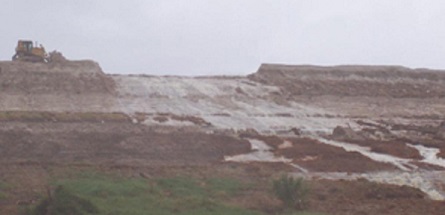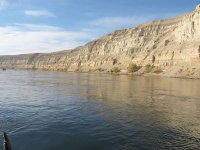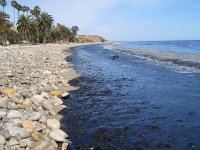Mosaic
Hazardous Waste Release | Riverview, FL | September 2004
What Happened?
On September 5, 2004, acidic process water was released from the Mosaic Fertilizer, LLC storage containment system during Hurricane Frances. By the following day, an estimated 65 million gallons had emptied into Archie Creek Canal, Hillsborough Bay, and surrounding wetlands.
What Were the Impacts?
The spill harmed nearly 10 acres of seagrass beds and more than 135 acres of wetland habitats, including almost 80 acres of mangroves. The acidic water dramatically lowered pH, directly killing thousands of fish, crabs, and bottom-dwelling organisms. The influx of nitrogen and phosphorous also disrupted the local ecosystem, potentially injuring fish and other aquatic wildlife.
What’s Happening Now?
Following the spill, NOAA worked with other trusteesGovernment officials acting on behalf of the public when there is injury to, destruction of, loss of, or threat to natural resources. and Mosaic Fertilizer to assess the extent of harm to the environment. We then developed restoration options to compensate the public and return the area to its function as a natural system.
In 2013 and 2014, Mosaic implemented the projects identified in the Restoration Plan:
- removal of 26.5 acres of invasive exotic plants
- widening and improving tidal creeks
- increasing flow through 85 acres of mangrove forest
- construction of a 3500-square-foot oyster reef
- creation of a brackish tidal wetland
Implementation was completed in the summer of 2014. Mosaic Fertilizer is monitoring ecosystem recovery with oversight by the trustees.
“It is important as stewards of the environment to make whole any impacts that may lessen or reduce services provided from these natural systems. This work is helping to restore a variety of habitats including mangrove forests, oyster reefs, and marshes that support hundreds of species in the Tampa Bay Area. The projects are also compensating for the loss human recreational activities like kayaking, bird watching, and commercial and sport fisheries.”
Sean Meehan
NOAA Marine Habitat Restoration Specialist
Contacts
Sean Meehan
NOAA Restoration Center
St. Petersburg, FL
(727) 824-5330
sean.meehan@noaa.gov







